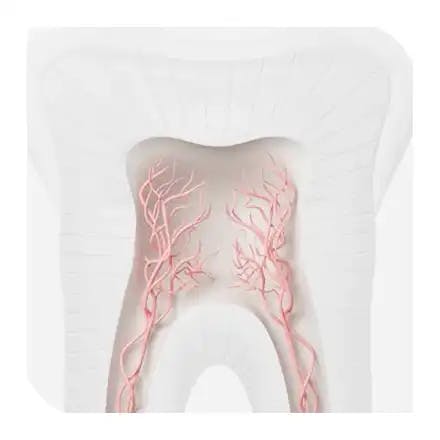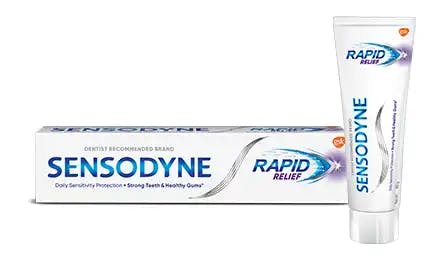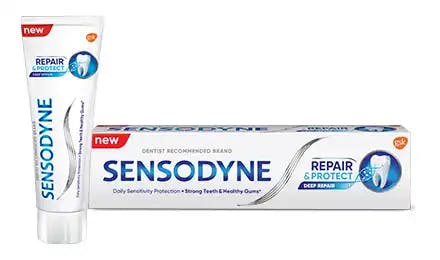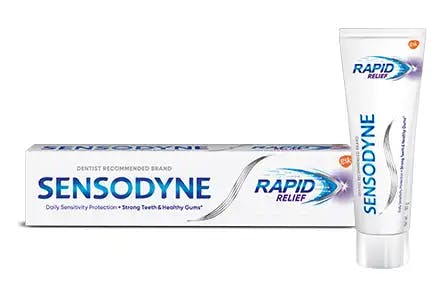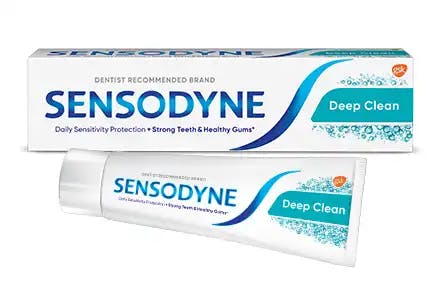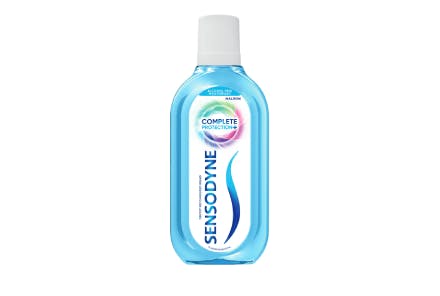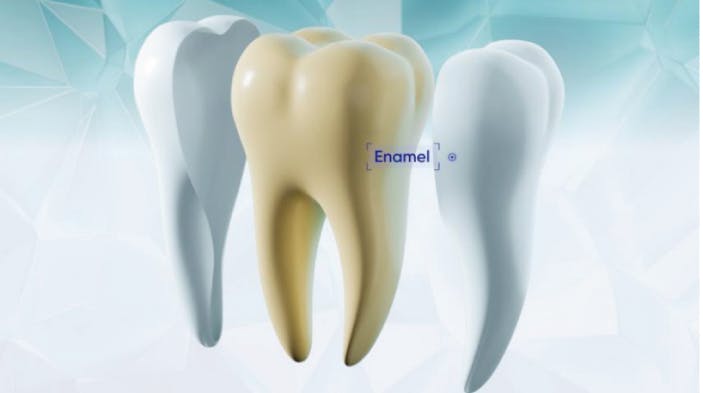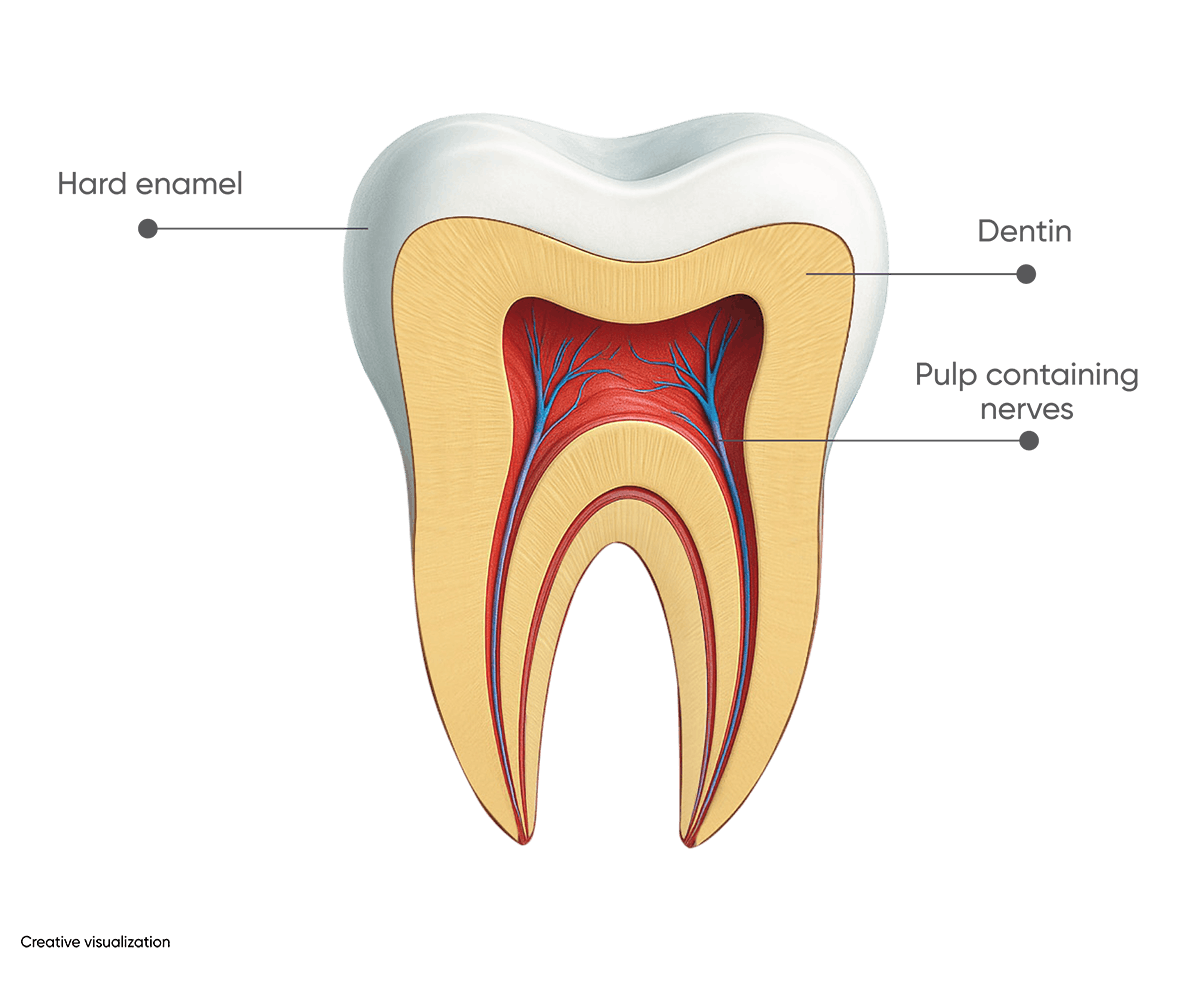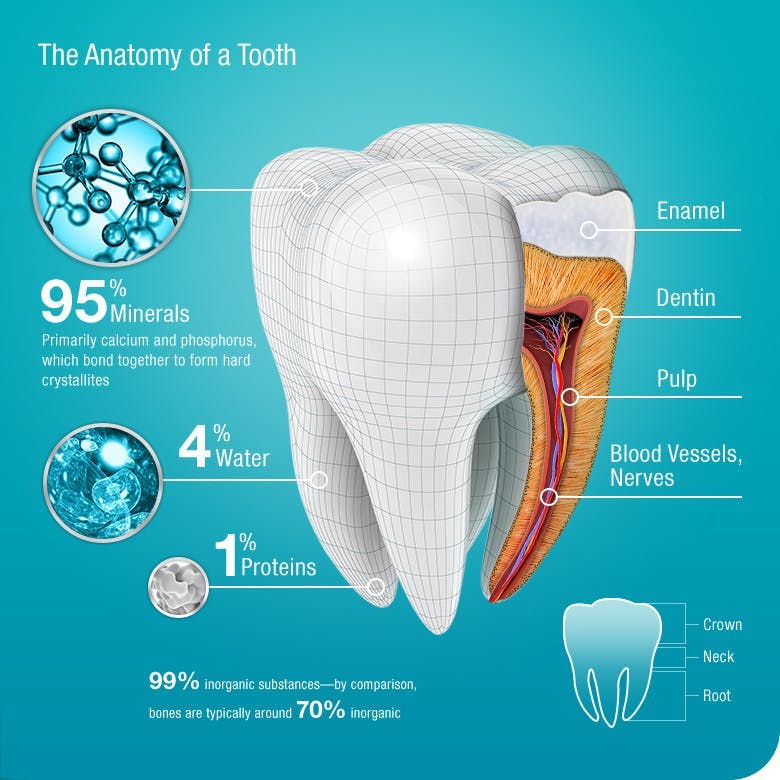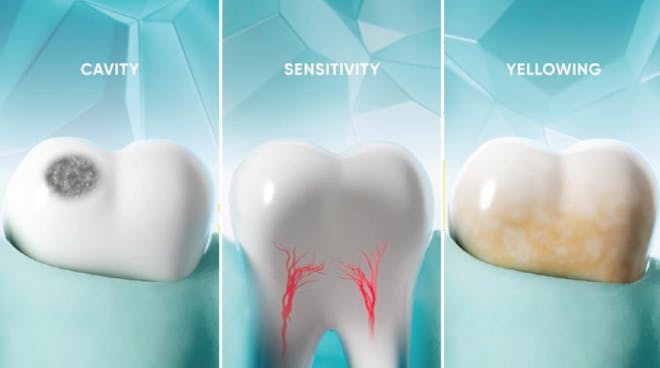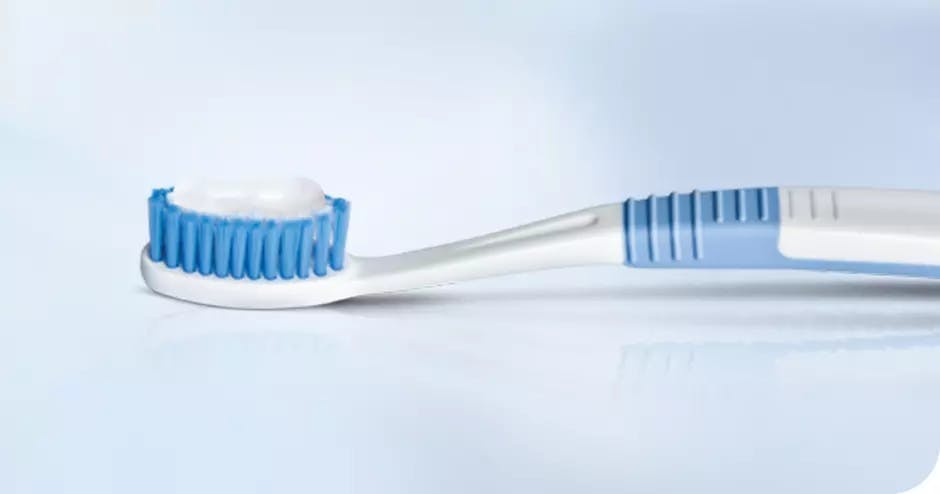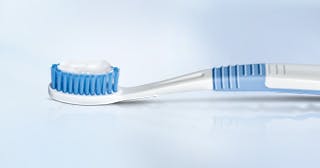What is Enamel?
Tooth Enamel: The layer of protection for our teeth
Tooth enamel is the hard, visible, outermost covering of your teeth. Tooth enamel is made up of a high percentage of minerals, making it the hardest substance in the human body. Enamel s translucent, giving teeth their sparkle, and depending on its thickness, it shows through the colour of the underlying dentine, which can vary from light yellow to a grey or blue-like white. Keeping enamel strong is vital to protect against acid wear, enamel erosion and tooth sensitivity, helping you maintain a bright and confident smile.

What is enamel made of?
Tooth enamel is the hardest substance in the human body, made up almost entirely of minerals. Around 96% of its structure consists of tightly packed inorganic crystals, while the remaining 4% is made up of water (3%) and organic material (1%). This mineral-rich composition gives enamel its incredible hardness and natural translucency, allowing the color of the underlying dentine to show through.
Did you know?
Enamel has an average thickness of 2-3mm, yet it can effectively protect the sensitive inner layers of teeth from exposure to hot, cold and acidic foods that can lead to tooth sensitivity.
Since tooth enamel contains no living cells, it lacks the ability to regrow. Once it’s lost, it cannot regenerate—leaving the softer layer underneath it less protected. If damage is left to progress, it can be lost altogether in certain areas, exposing the underlying dentine.
Repeated intake of acidic food and drink is a leading cause of enamel wear. Many acidic foods and drinks that make up our everyday diets – like soft drinks, fruits and fruit juices – can dissolve tooth enamel over time. This process is called acid erosion or erosive tooth wear, and approximately up to 1/3rd of young adults may be at risk of it already.1
Keeping enamel strong is important to maintaining good oral health. By taking simple steps every day, you can help protect your teeth from the effects of acid erosion.
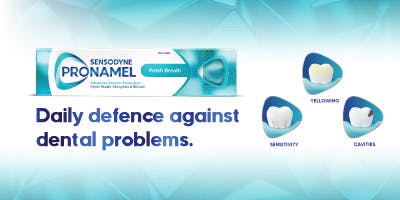
What happens when your tooth enamel starts to wear away?
Yellowing
When significant amounts of enamel are worn away, the slightly yellow dentine layer underneath becomes more visible. As the enamel continues to thin, teeth may also lose their natural shine, making them appear dull.*
Sensitivity
As the protective enamel wears away, the underlying dentine can become exposed. This often results in tooth sensitivity, causing discomfort when consuming hot, cold, sweet, or acidic foods and drinks.*
Tooth Decay
Tooth decay is a condition caused by acid damage from bacterial toxins in the mouth. Cariogenic bacteria feed on sugary foods and produce acids that wear down the hard surface of the teeth (enamel). Over time, this acid damage removes minerals from the tooth and breaks down its structure, leading to cavities. This process is reversible with early intervention.*
